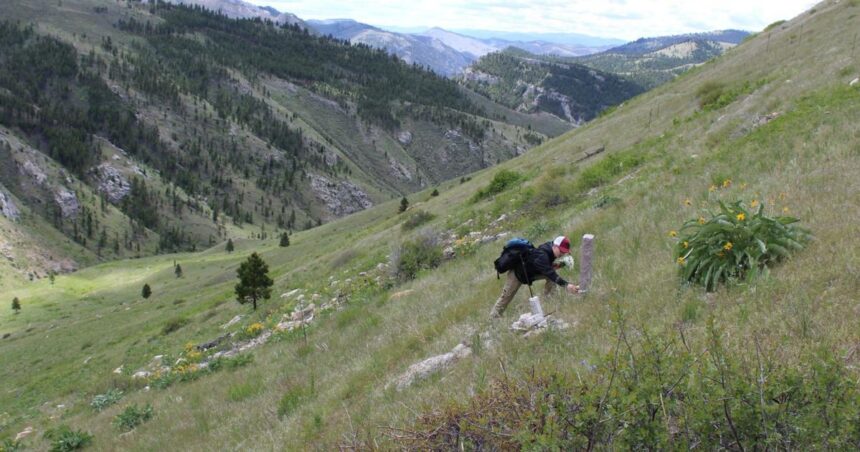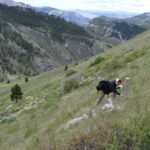Eldon Eugene Diettert was looking forward to celebrating his 19th birthday with his family in Missoula on August 5, 1949, when word came that there was a fire in the Gates of the Mountains Wild Area northeast of Helena. Diettert was not supposed to work that day, but another member of the recently formed U.S. Forest Service smokejumping crew in Missoula was out sick, so he was told to report to the airport. His mom’s famous birthday cake would have to wait.
But that birthday celebration would never come. A few hours after taking off from Missoula, Diettert and 12 others would perish in an inferno that would change wildland firefighting forever.
Members of the U.S. Forest Service retrieve the bodies of victims who perished during the Mann Gulch fire in August of 1949.
This weekend, a series of events in Helena will mark 75 years since the Mann Gulch Fire, the single deadliest day in the history of smokejumping. The fire inspired Norman Maclean’s award-winning book, “Young Men and Fire,” but more importantly it had a profound impact on how wildfires are managed and fought, leading to a set of rules that all wildland firefighters still carry with them three-quarters of a century later.
People are also reading…
TRAGEDY AT MANN GULCH
Diettert was born on August 5, 1930, in Moscow, Idaho, the second son of Reuben and Charlotte Diettert. Reuben was a professor and as a result, the family moved a number of times, eventually ending up in Missoula, where he worked for the University of Montana’s botany department. As a boy, Diettert and his brother Gerald would sell magazines and do whatever they could to help the family out financially. When he was old enough, Diettert worked for the U.S. Forest Service, and it was there that he decided he wanted to pursue a forestry degree. In 1949, he applied to join the smokejumpers.

Eldon Eugene Diettert was one of 13 firefighters killed during the Mann Gulch Fire near Helena on August 5, 1949.
Smokejumping was a relatively new craft, emerging in the 1930s as a way to quickly get firefighters into remote territory to douse blazes. At the time, the USFS subscribed to what it called the “10 a.m. policy” where it attempted to suppress every fire reported by 10 a.m. the next day, an all-or-nothing method of firefighting that did not consider the role of fire on the landscape. Missoula was, and still is, the largest smokejumper base in the country.
In the spring and early summer of 1949, Diettert did practice jumps around western Montana, many of which he recorded in sketches and letters to his family. But he wasn’t called on a fire until the afternoon of August 5, the day of his 19th birthday.
The lightning-caused Mann Gulch Fire had started the previous day northeast of Helena and by mid-day on Aug. 5, it had already burned about 60 acres. Early that afternoon, the local forest supervisors decided to call in smokejumpers. At 2:30 p.m., a C-47 military transport aircraft departed Missoula with a crew of 16 smokejumpers, including Diettert. A little over an hour later, they were approaching the fire, but turbulence was an issue and one smokejumper got so sick he couldn’t make the jump.
By 4 p.m.,





